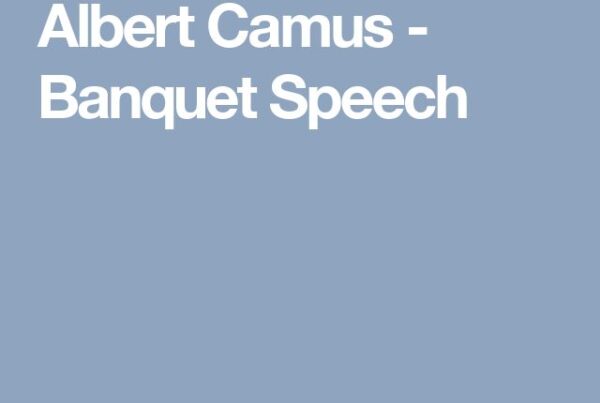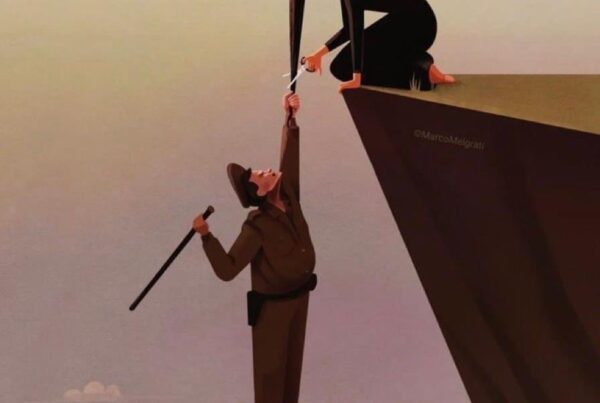 “Here in Iran, Professor Wallerstein, you are a dangerous man.” So an adviser of President Hassan Rouhani counseled the 83-year old sociologist, and he was correct. It was March, and Immanuel Wallerstein had just arrived for a three-city lecture tour. It was as if the Islamic Republic had granted a visa to Elvis Presley.
“Here in Iran, Professor Wallerstein, you are a dangerous man.” So an adviser of President Hassan Rouhani counseled the 83-year old sociologist, and he was correct. It was March, and Immanuel Wallerstein had just arrived for a three-city lecture tour. It was as if the Islamic Republic had granted a visa to Elvis Presley.
From left to right and secular to Islamist, people from all points on the Islamic Republic’s intellectual spectrum read Wallerstein. His name is printed in high-school textbooks next to a summary of his contrarian approach to social change: a “world-systems” perspective that upends the idea of the nation-state as the sole protagonist of history. Countries do not leap unescorted toward development or decline; for Wallerstein, that is the stuff of nationalist myth. His analytical canvas is far larger: a “world-economy” within which states, capitalists and social movements compete for resources and power, entering the contest with unequal amounts of each. The relational contention among these many actors spurred the expansion of capitalism over the past five centuries, the rise and fall of great powers, and the stratification of countries and world regions by wealth and poverty. In transforming the world, these struggles also concocted our twentieth-century ideology of development — a saga of national progress from tradition to modernity.
Wallerstein is, understandably, a popular thinker in middle and lower-income countries like Iran. Most of these places spent the past several generations strenuously cycling through a variety of governments, political ideologies and economic policies. Yet when they followed the tut-tutting advice of wealthy states, and even if they did not, they remained relatively poorer and judged accordingly in status. Many such countries lived through boom times in the 1960s and 1970s, their citizens expecting to enjoy North American and Western European living standards within their lifetimes, only to fall back a decade or two later. The same thing could be occurring again, as the giddy hedge fund category “BRICs” tips into “the fragile five” or “the exposed eight.” With economists fretting over why so many countries are treading water in a middle-income trap, or stuck in political and socio-economic “transition,” the panoramic perspective of Wallerstein can be refreshingly Copernican. Even in the ostensibly successful economies of South Korea and Turkey, each book he pens is immediately translated and published.
“Wallerstein is, understandably, a popular thinker in middle and lower-income countries like Iran. Most of these places spent the past several generations strenuously cycling through a variety of governments, political ideologies and economic policies. Yet when they followed the tut-tutting advice of wealthy states, and even if they did not, they remained relatively poorer and judged accordingly in status. “
The sociologist’s Iranian stardom was something to behold. One student, after hearing Wallerstein lecture to a thousand listeners at the University of Shiraz, nearly decapitated himself craning his neck into a mini-bus to emit an arcane question about theories of geopolitics. An esteemed female professor in Tehran rhetorically asked Wallerstein in front of 40 scholars whether he believed that men could sincerely hold feminist positions. A young sociologist in Isfahan fished for gossip on what Slavoj Zizek was like in person. “I met Gorbachev, too,” Wallerstein responded. “Why don’t you ask me about him?”
A drawback of being a celebrity scholar is that complex ideas sketched across decades in books and articles are blurred into a Rorschach blot. Consequently, we learn more from the viewer than from the ink. A public intellectual of such stature had not visited Iran since the cerebrally intoxicating days of Muhammad Khatami, when Jürgen Habermas, Richard Rorty and Antonio Negri commanded large audiences. A decade later, the tour of a Jewish-American social scientist who knew both Frantz Fanon and Talcott Parsons represented an opportunity in the post-Ahmadinejad era. Wallerstein became weapon and foil for all sides of Iran’s new political calculus.
Even though the non-governmental Iranian Sociological Association arranged the visit, Rouhani’s aides ensured that the trip looked official. A supposedly discreet encounter at the Center for Strategic Studies, Rouhani’s former think tank, soon blared itself on state news with the headline, “The American Sociologist’s Visit with the President’s Cultural Adviser.” The center-left newspaper Sharq ran an interview with the optimistic lead attributed to Wallerstein, “Today Dramatic Transformations Have Occurred in Iran.” Over the next several days Sharq and Etemad published numerous Rashomon-style commentaries: Wallerstein as Africanist, New Yorker, Marxist, anti-Marxist, critic of orthodox social science and canonical social scientist. The interpretive competition aroused interest beyond narrow academic circles. In what was likely an intended effect, many people came to see the spectacle.
Conservatives did not miss their chance, either, to sashay with revolutionary swagger. If Wallerstein argued that Western social science’s pretensions to universality can be unpacked as one historical outcome among many, the website Ejtema’i asserted, then an authentic “Iranian-Islamic” social science should be a logical replacement. The far-right website 598, titled after the 1987 UN Security Council resolution for an Iran-Iraq war ceasefire, suspected a rat: “The American Guest of the President’s Center for Strategic Studies Defended the 2009 Sedition!” Its reporter did not appreciate Wallerstein’s comment during a University of Tehran press conference. No matter its actual outcome, the sociologist affirmed, many Iranians believed the 2009 presidential election to be rigged. The resulting state repression during post-election protests precipitated a crisis that contributed to Rouhani’s 2013 victory. The 598 story promises that the “598 base” would “soon publish a full report on the purposes and travel plans of this theorist of global capitalism.” No such report yet exists, suggesting that Iran’s hyped “thousands-strong Cyber Army” largely consists of comically inept trolls. [1]
The savvier Fars news agency, however, did not waste the occasion. A widely copied story alerted the right-wing media, “Immanuel Wallerstein to the Washington Post: In Iran They Told Me Not to Speak About the Decline of America!” [2] The entire quote in the Post reveals the opposite point: “I’m saying the US is in decline and is weaker than it thinks, but I’m also saying Iran is weaker than it thinks, and everyone has to get realistic about how much power they really have in the world.” [3]
This mutation of academic exchange into factionalized fodder made for passing headlines. Yet there is nothing more ordinary in Iran than untamed political rivalries masked as bookish “post-ideological” deliberations. The most striking feature of Wallerstein’s visit remained out of sight. Barring a few overactive cyber-twerks, all points on the political compass sidled up to the retired Yale professor asking if prospects for US-led negotiations could be taken seriously. Could Barack Obama pull it off? Did the US honestly want to make a deal? The Democratic president has carved out no foreign policy legacy over two terms: Has that fact forced Obama to negotiate, or will it prevent him from securing the needed backing coalition? In patiently explaining to different audiences Washington’s tenuous poker game, with its wild cards and jokers still in the deck, Wallerstein ended up as diplomat by default. The desperate tone of the questions indicated a not-so-subtle tell. Iran’s political elite is heavily invested in a successful rapprochement of some sort. They needed emotional assurances that a deal would not change the internal status quo, but rather uphold it.
The overt posturing that occurs alongside this private handwringing is a strategy of cheap boast as countervailing force. What Iranian politico did not sigh in relief at Leader Ali Khamenei’s forceful revolutionary rejoinder of a “resistance economy” against the temptations of foreign capital and predations of Western powers? [4] With such a backdrop, business could continue as usual. The first step toward realizing the Leader’s bold plan, an op-ed in the newspaper Donya-ye Eqtesad proclaimed, was strengthening the private sector. [5] Mohammad Khoshchehreh, a former Ahmadinejad supporter turned sour, delighted in telling Fars that the Leader was not referring to 1980s wartime hangovers of autarky or self-sufficiency. Instead, a resistant economy prudently maintained a positive balance of payments and diversified from oil into higher value-added exports. [6] Former commerce minister and current Tehran Chamber of Commerce chief Yahya Al-e Eshaq put his finger on the pulse of resistance by calling for a healthy business environment, integration with the world economy and the selloff of uncompetitive semi-public entities. [7] In today’s tempered Iran, revolutionary resistance aspires to the status of Brazil or Malaysia.
Below the elite ruckus, Wallerstein’s visit revealed something else. At the level of quantity, at least, the academic sphere did not wither under Ahmadinejad’s tenure. Over the past eight years, access to higher education surged, spreading to every corner of the Islamic Republic. This leap occurred via an expansion of private institutions that charged higher tuition fees but imposed less stringent admission requirements. Between 2005 and 2013, the number of higher education institutions in the country swelled from 1,300 to 2,504 — an average of 13 new centers a month. [8] The private Payam-e Nur college network, for instance, increased its capacity by nearly 300 percent over these years. Iran’s higher educational system is now 85 percent privately operated, while regulated — albeit loosely — by the state. [9] To a large extent, this growth reflected supply catching up with demand. As recently as 2009, when the post-election Green Movement captured world attention, 37 percent of university-age Iranians were enrolled in higher education, according to UNESCO; by 2012, the number had shot to 55 percent. (In 1999, when street protests broke out among Tehran’s pro-reform university students, the level stood at 19 percent.)
Iranians today pursue a degree for numerous reasons: obtaining credentials for the labor market, eluding parental constraints, delaying marriage or boosting status to attract a better marriage partner. Yet this massive expansion yields problems also seen in other middle-income countries, including India and China. Private diploma mills churn out questionable degrees with few technical skills or useful networks for graduates in tow. Unemployment levels creep upwards faster for educated individuals than for unskilled workers. As it stands, the public sector cannot absorb any more personnel, while labor-intensive segments of the private sector shrink under the weight of recession and deindustrialization. Professionals cannot close associational ranks to protect their status, while an influx of newly graduated doctors and lawyers fight for dwindling office space and ever-more discriminating clients. Education only functions as human “capital,” after all, if it reaps rewards from sunken investment. The other side of the peak could already be visible. Lower-tier, for-profit university systems are below their enrollment capacities by a large margin for the coming year. [10]
In other words, Iran’s fabled brain drain is the external manifestation of a world-systemic dilemma. [11] For 30 years, the Islamic Republic has promoted higher education as an assumed mechanism of revolutionary modernization. The state is now confronted with an over-credentialing crisis of its own making. Underneath the Beatles-like reception of Immanuel Wallerstein by curious throngs of students is a pedagogical Ponzi scheme.
Iran’s new minister of labor and social welfare recently announced that the Rouhani administration’s future goal of 6 percent GDP growth per annum should produce 1 million new jobs a year. As part of the plan, the government intends to push the country’s educational system toward a “German” model, in which scientific and vocational training channel workers directly toward the economy’s industrial needs. The coordination required for such a scheme cannot rely on revolutionary rhetorical flourishes or a mercurial private sector. It demands not only organizational links between politicians, foreign investors and domestic brokers, but also the cooperation of newly educated Iranians themselves.
Ironically, the quantitative push for university credentials sanctioned by the Ahmadinejad administration widened the social coalition that voted against his conservative peers in 2013. After all, Rouhani performed better in the election in most provinces than in the capital itself. Young voters newly credentialed via educational attainment, many of whom were too young to participate in the controversial 2009 election, decided to cast a ballot. As a result, their demands are now added to the already long list of promises with which the Rouhani administration will be judged in the domestic political arena.
On my final day in Tehran, I chatted up the obligatory cab driver. Can Rouhani pull it off, I asked? “If his heart is pure, then it will be fine,” the old Turk said. “If the only thing that comes of it is a new group of rich sons-of-bitches, then it is over.” I rephrased the question: Is this the last chance for the Islamic Republic’s elite to reform their own system? “Yes, that’s a good way of putting it.” Iran’s elite consensus may be substantial and its mild aims feasible, but its supporting popular front is fragile. Or, to put it another way, revolutionary states are not “external to the historical system but the excretions of processes internal to it. Hence they have reflected all the contradictions and constraints of the system. They could not and cannot do otherwise.” [12] Iran’s elite may want to read Wallerstein again. Luckily, he’s still in all those Tehran bookstores.
Author’s Note: I accompanied Wallerstein on his Iran trip as a fly-on-the-wall observer and sporadic translator, but did not arrange any events or meetings, official or otherwise.
Endnotes
[1] 598.ir, March 2, 2014.
[2] Fars, March 11, 2014.
[3] Washington Post, March 3, 2014.
[4] Etemad, March 12, 2014.
[5] Donya-ye Eqtesad, March 9, 2014.
[6] Fars, March 2, 2014.
[7] Donya-ye Eqtesad, April 4, 2014.
[8] Mardom Salari, December 7, 2013.
[9] Sharq, February 24, 2013.
[10] Ibid.
[11] The number on Iran’s brain drain hurled around the media — an “IMF estimate” of 150,000 educated migrants a year — is unreservedly false. It comes from a 1998 IMF working paper that estimates the total stock of Iranian migrants in the US over age 25 at 150,000 — with all levels of education — for the year 1990. A stock of migrants located in one country 25 years ago is not an annual flow. Why the notion of Iran having the highest brain drain in the world is continually repeated not only by the political opposition and the diaspora but also by political elites in the Islamic Republic for the past two decades is a question that deserves critical consideration. See William Carrington and Enrica Detragiache, How Big Is the Brain Drain? IMF Working Paper, July 1998, pp. 13-15.
[12] Immanuel Wallerstein, Historical Capitalism (London: Verso, 1983), pp. 107-108.
from: merip.org


